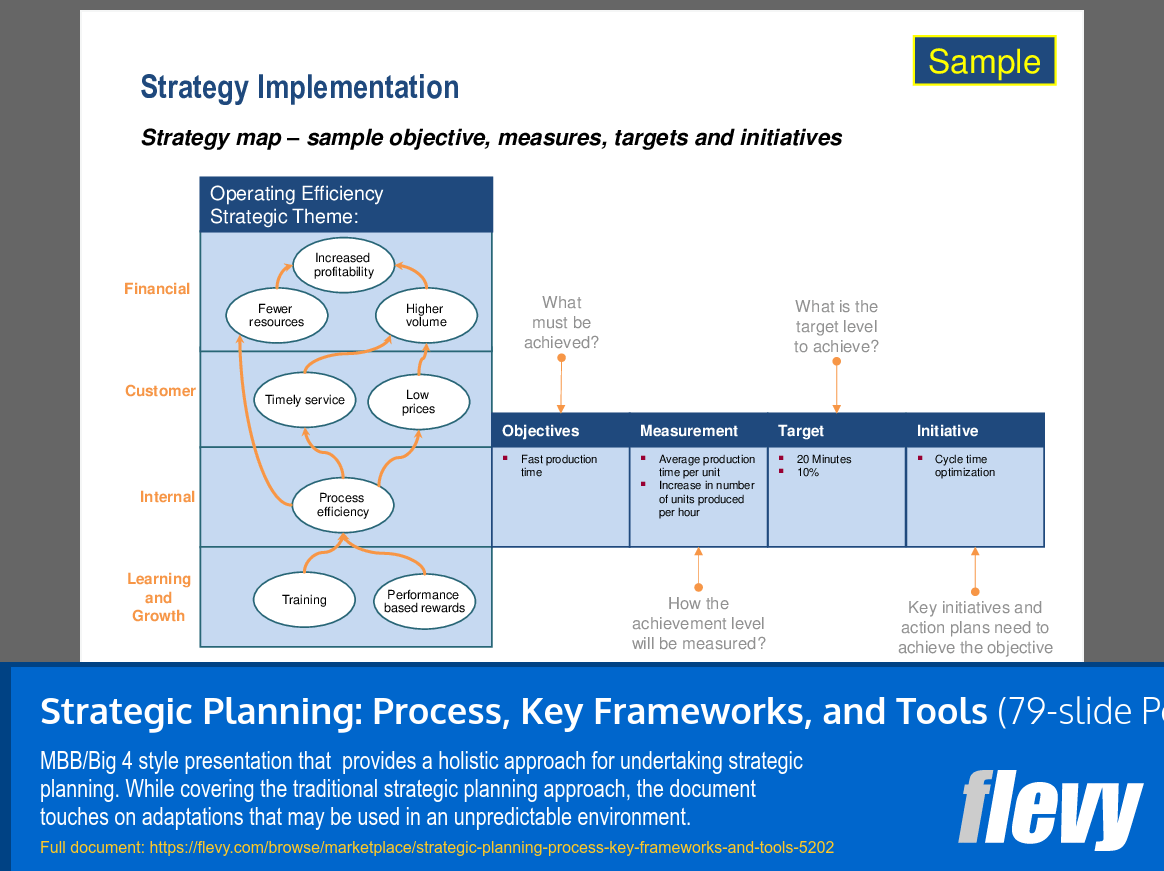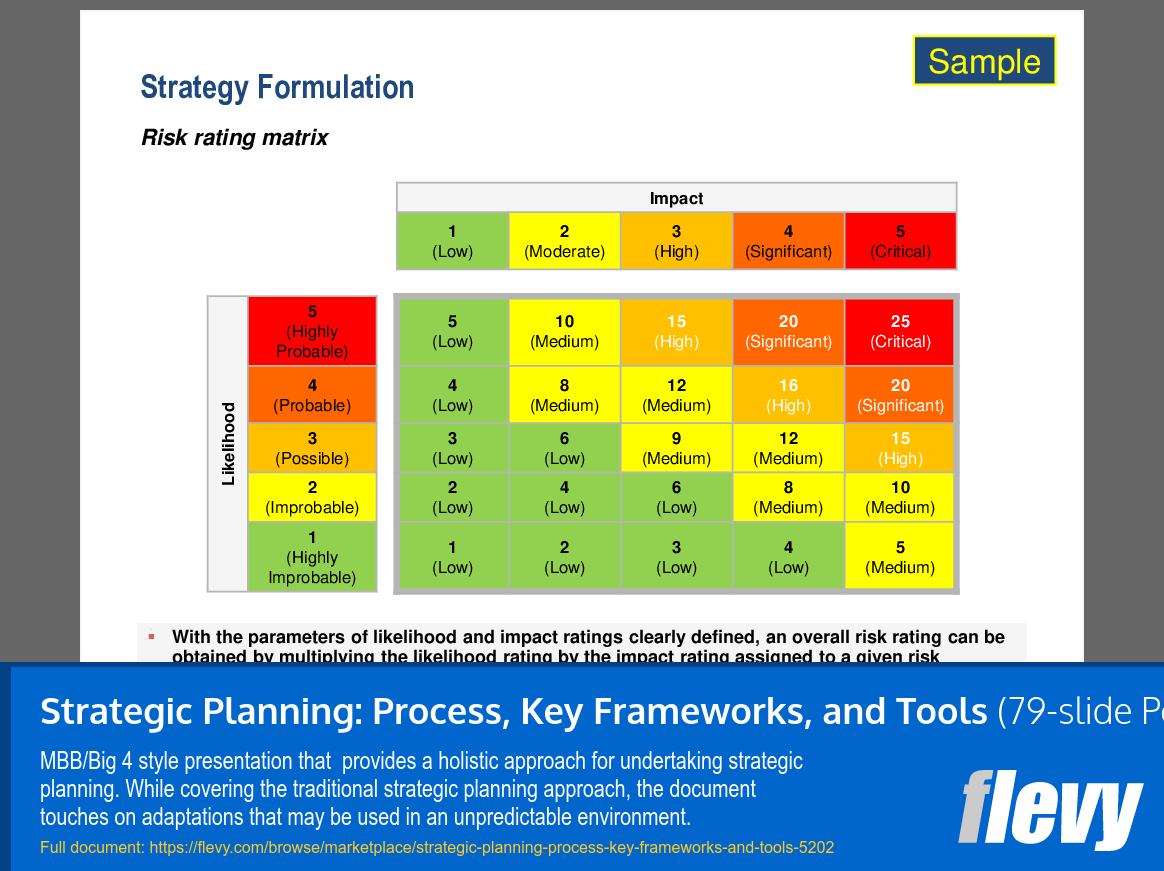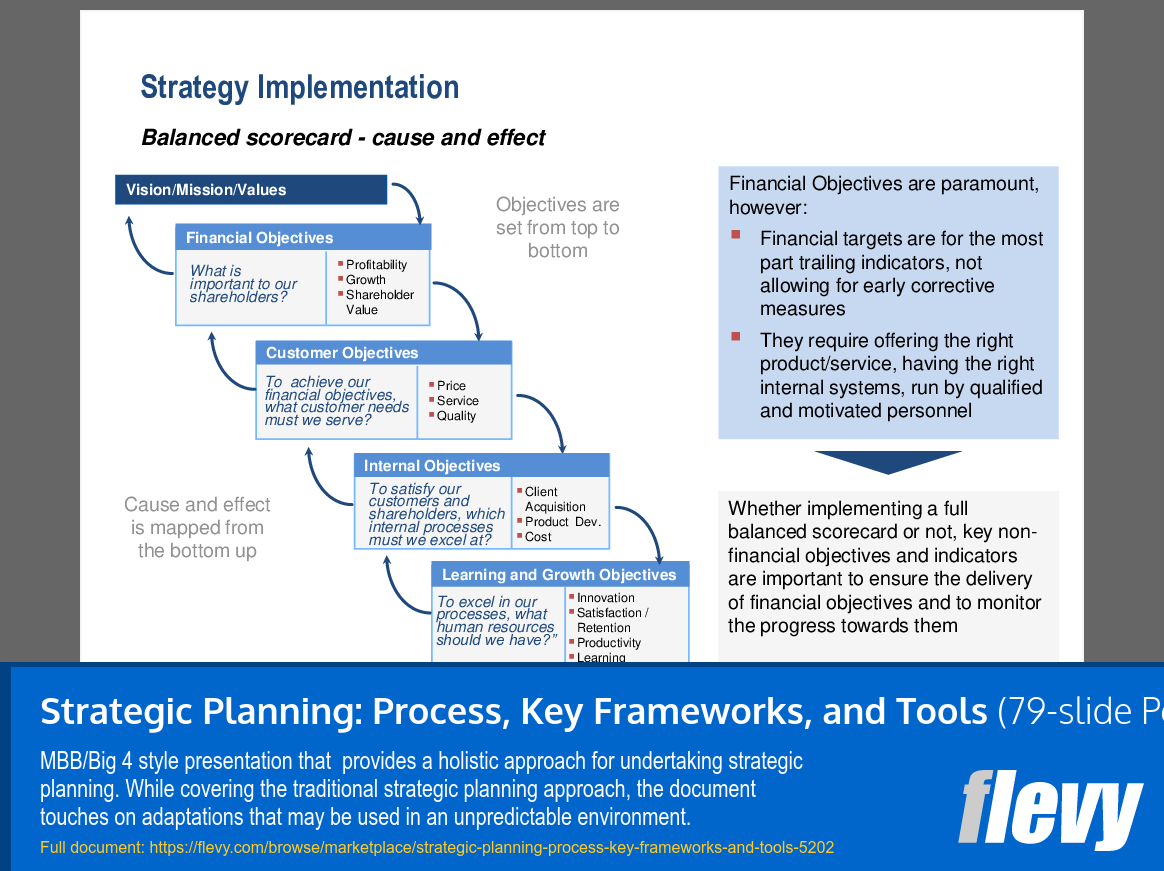Strategic Planning: Process, Key Frameworks, and Tools (PowerPoint PPTX Slide Deck)
PowerPoint (PPTX) 79 Slides
BENEFITS OF THIS POWERPOINT DOCUMENT
- Helps to structure the strategic planning process in clear steps
- Provides a brief overview of key frameworks commonly used throughout the planning process
STRATEGIC PLANNING PPT DESCRIPTION
This document provides a holistic approach for undertaking strategic planning. While covering the traditional strategic planning approach, the document touches on adaptations that may be used in an unpredictable environment.
Contents:
1. Strategic Planning Overview
• Key questions and associated stages
• Key stages and associated elements
• Adaptation in an unpredictable environment
• Strategy approaches
2. Strategic Planning Process
• Main planning phases
• Breakdown of main phases
• Key planning activities and methods
• Typical timeline for traditional strategic planning
3. Strategic Intent
• Key elements of the Strategic Direction Statement
• Strategy and culture
• Goals vs objectives
• Big Hairy Audacious Goal (BHAG)
• Big Hairy Audacious Goal (BHAG) – examples
4. Stakeholder Analysis
• Mapping the key stakeholders
5. Internal Analysis
• Sources of competitive advantage
• VRIO analysis
• Porter's value chain
6. Environmental Analysis
• PEST analysis sample factors
• PEST analysis factors – summary slide
• PESTEL analysis sample factors
• PESTEL analysis factors – summary slide
• Impact/uncertainty matrix
• Scenario identification
• Identified key scenarios descriptions – summary slide
7. Industry Analysis
• Porter's five forces analysis
• Porter's five forces analysis – key factors to consider
• Porter's five forces analysis – summary slide
• Industry life cycle
• Industry life cycle with Porter's five forces
8. Market Analysis
• The BCG portfolio matrix
• The BCG portfolio matrix with characteristics
• The BCG portfolio matrix – plotted
• McKinsey/GE matrix
• McKinsey/GE matrix – potential actions
• McKinsey/GE matrix – plotted
9. Competitor Analysis
• Competitor identification
• Competitive benchmarking by relevant industry indicators
• Competitive profile matrix (CPM)
10. Strategic Synthesis
• Situation analysis drives strategy formulation and plans
• SWOT analysis – key elements and actions
• SWOT analysis – key questions to consider
• SWOT analysis – potential factors to consider
• SWOT analysis – summary slide
• Internal Factor Evaluation (IFE) matrix
• External Factor Evaluation (EFE) matrix
11. Strategy Formulation
• Strategy levels – a typical large company
• Strategy levels – a typical small company
• Porter's generic strategies
• Strategy types
• SPACE matrix
• Ansoff's matrix
• Ansoff's matrix – potential actions
• Blue ocean strategy
• Risk management process
• Risk rating matrix
• Risks and contingencies
12. Strategy Implementation
• McKinsey 7S model
• Balanced scorecard
• Balanced scorecard – cause and effect
• Balanced scorecard – cascading strategies and objectives
• Strategy map – strategic theme
• Strategy map – sample objective, measures, targets and initiatives
• Objectives vs goals
• Objectives – SMART
• Initiative action plan
The PPT includes a detailed breakdown of strategic planning phases, from vision and mission evaluation to operational planning. It also provides comprehensive tools for internal and external analysis, including VRIO, PESTEL, and Porter's Five Forces.
Got a question about the product? Email us at support@flevy.com or ask the author directly by using the "Ask the Author a Question" form. If you cannot view the preview above this document description, go here to view the large preview instead.
Source: Best Practices in Strategic Planning, Strategy Frameworks, Strategic Thinking, Bain PowerPoint PowerPoint Slides: Strategic Planning: Process, Key Frameworks, and Tools PowerPoint (PPTX) Presentation Slide Deck, ILMAM - Strategy & Management Consulting
STRATEGIC PLANNING PPT SLIDES

















